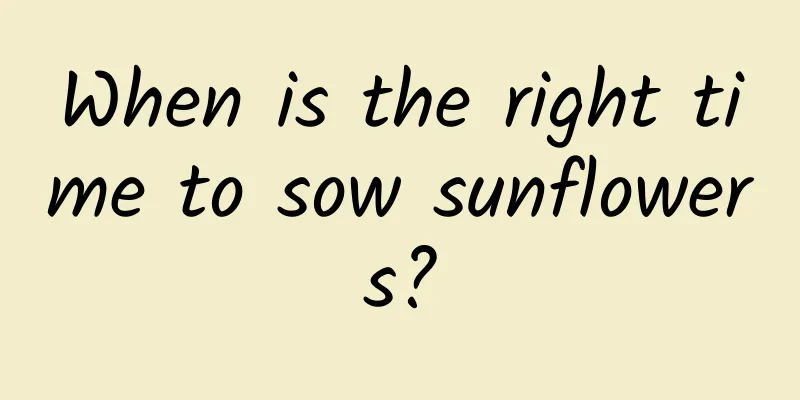Best time to fertilize pear trees in winter

|
Pear trees are deep-rooted species with strong trunks and obvious layers. In the early stage, the branches grow upright. As the growth accelerates and the number of branches increases, the crown gradually opens. Generally, it starts to bear fruit 3-4 years after planting, enters the peak fruit-bearing period 7-8 years later, and the economic life span is generally more than 50 years. Timely winter management of pear trees is crucial for accumulating tree nutrients, preventing and controlling diseases and pests, and ensuring a good harvest next year. Learn below the best time and method to fertilize pear trees in winter. 1. Best time The best time to fertilize pear trees in winter is usually between the end of the tree's dormant period and the beginning of the spring growing period, which is usually between late winter and early spring. Basal fertilizer can be applied to pear trees from the time the fruits are harvested to the time the young buds sprout in the next spring, but autumn is the best time to apply fertilizer. It is recommended to apply fertilizer when the soil moisture is good from September to November. 2. Garden Cleaning and Whitewashing Clean up fallen leaves, weeds, diseased fruits and branches in the orchard in a timely manner, and burn or bury them in a centralized location to eliminate the growth and spread of harmful pathogens. Spray a 1:5 lime water solution on the tree trunks. Its strong alkalinity can effectively kill pathogens and overwintering insect eggs on the tree, creating good conditions for a good harvest next year. 3. Fertilization and watering Autumn and winter are the peak periods for root growth of pear trees and are also critical periods for accumulating nutrients. We should seize the favorable opportunity between fruit picking and freezing to apply fertilizer in time to supplement the tree's nutrition, promote the fullness of flower buds, and help damaged roots recover as soon as possible. The amount of topdressing in this stage should account for 60% to 70% of the total annual fertilization, with organic fertilizer as the main component, to increase the soil organic matter content, improve soil structure, and enhance permeability. At the same time, use compound fertilizers containing medium and trace elements, such as 15-15-15 balanced fertilizer. When applying fertilizer, use the radial trench method. The trench should be 30~40 cm wide, 30~40 cm deep, and the length should exceed the projected area of the tree. Water the trees promptly after fertilizing to promote nutrient absorption and root recovery. Watering with frozen water can also enhance the frost resistance of the pear trees. 4. Tie the straw bundle Tying bundles of grass on tree trunks can lure overwintering insect eggs, which can then be burned in a centralized location in the spring of the following year, thereby reducing the overwintering base number of pests and alleviating the occurrence of insect pests the following year. 5. Deeply plow the root plate Deep root tray plowing helps loosen the soil and increase soil permeability. It can also freeze the eggs of pests to death or allow birds to prey on the eggs, thereby reducing insect pests in the coming year. 6. Plastic surgery The shaping and pruning of pear trees should be adjusted in a targeted manner based on factors such as the tree's variety characteristics, age, growth, pruning response, natural conditions, and cultivation management level. For young trees, shaping should be the main focus, and the tree shape should be determined in combination with the tree variety and planting density to promote early fruiting and high yield. For trees entering the peak fruit-bearing period, they need to be pruned to allow light in, and thin out the outside to nourish the inside, to avoid insufficient light inside that would cause the base of the main branches to be bare. At the same time, the fruiting branch groups must be constantly renewed and rejuvenated to enhance the tree vigor and maintain good fruit-bearing ability. In addition, it is necessary to coordinate the relationship between large, medium and small fruiting branches so that the fruiting branches are evenly distributed to increase yield and improve quality. For aging trees, they need to be renewed and rejuvenated in a timely manner, and new crowns need to be recultivated. Try to retain as many new branches as possible and quickly cultivate them into fruiting branch groups. In short, the best time to fertilize pear trees in winter can be from late autumn to early winter, or in early spring. The specific time needs to be determined based on local climatic conditions and the growth conditions of the pear trees.
|
<<: What fertilizer should be applied to wheat in winter?
>>: Which fertilizer is best for fruit trees in winter?
Recommend
How to water lilacs and what to do if water accumulates at the roots of lilacs
1. How to give water 1. Frequency: Lilac likes mo...
How to grow lucky bamboo in winter when it is below zero, how to grow hydroponic lucky bamboo in winter
1. How to raise fish in sub-zero temperatures Luc...
The efficacy and function of motherwort
1. Regulate menstruation and promote diuresis It ...
Rare and high-end vegetable varieties, the latest special vegetable varieties ranking and pictures
Generally speaking, the most expensive vegetable ...
Pests and control methods of dogtooth flower
Pests of dogtooth flower: aphids symptom Aphids a...
Medium-leaf chive planting time and method
Leek is a very common vegetable in our lives and ...
Summer dormancy and maintenance of succulent plants
Succulents that hibernate in summer Generally, so...
Strawberry planting time and method
Strawberries are a widely cultivated and very pop...
Differences between bamboo palm and palm tree
1. Different varieties Bamboo is a type of bamboo...
Can the trumpet creeper seedlings bloom in the same year? How big can the seedlings grow in a year?
1. Can the trumpet creeper seedlings bloom in the...
Can Anthurium be placed in the bedroom?
1. Can it be placed in the bedroom? Anthurium can...
How to cultivate Cypripedium
1. Maintenance methods 1. Temperature: The Cyperu...
Can honeycomb coal be used as flower soil?
Can honeycomb coal be used as flower soil? Honeyc...
Disease control of iris
Soft Rot Water-like spots will appear on the leav...
The efficacy and function of arrow leaf okra
Use as medicine This is the main function we are ...









